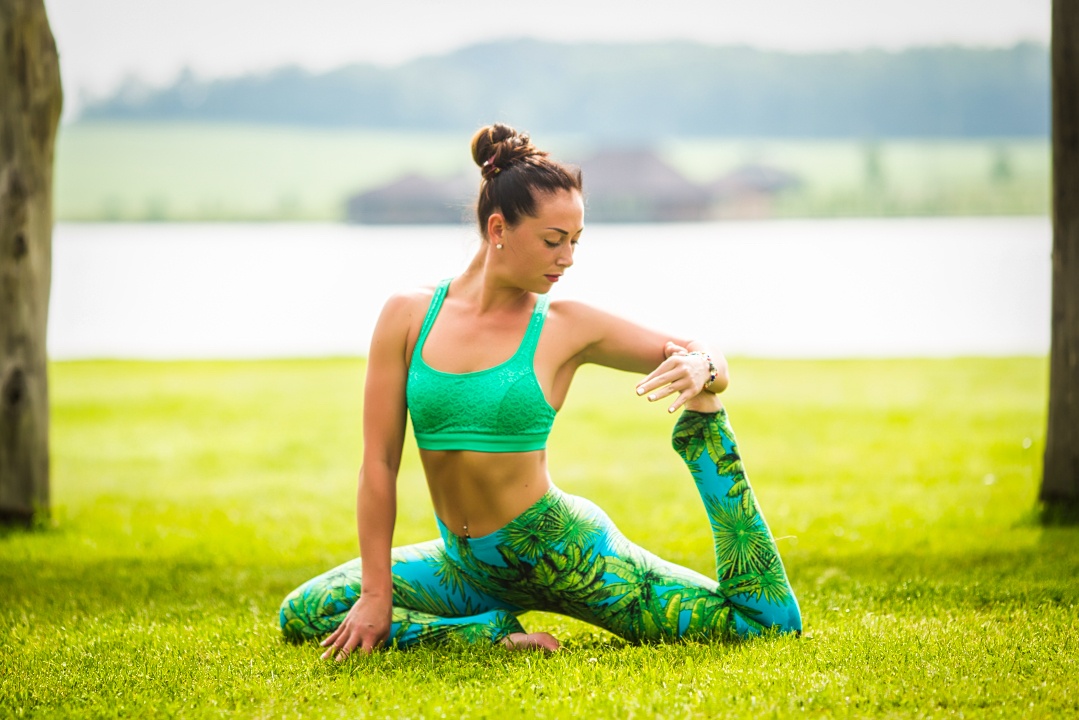Ever been impinged by your yoga mat? Maybe during class you moved from a high lunge to a standing forward fold and your foot placement wasn’t exact causing your sticky mat to bunch up underneath. Or, worse still, your mat smells funky from that hot class you took a few days ago and you get an odorous whiff every time you inhale in Child’s pose. A small but passionate set of yogis have just the solution. They say, “No more!” to yoga mats and are tossing them aside.
Can you do yoga without a mat?
Yes, you certainly can! But before you try you should understand the pros and cons of not using one. Your choice will also depend on the type of yoga you practice and your needs for padding, space, hygiene and eco-friendliness.
“The ecstasy of yoga can’t be contained by a mat,” said Dana Flynn, a director of Laughing Lotus, a studio in New York and San Francisco. Many yoga teachers in her studios encourage yoga students to practice without a mat, especially on a wood floor. But there’s more to it. It seems there’s an underlying feeling that the mat is seen as a status symbol and a way to mark your territory to these particular yoga practitioners. It’s also viewed as unhygienic and bad for the environment.
Who can argue with that? Most mats are made of a synthetic plastic-type product and while more and more “green” mats are being made available, the cost of producing and shipping the mats has some impact on the environment. And, using studio mats after other people have used them always seems a little germy, even though any reputable yoga studio will let you know the mats are cleaned between classes.
Practicing without a yoga mat
But have you ever practiced without a mat? It’s a bit strange. What if you show up with no mat and the floor is dirty? Yuck.

There is a certain comfort level to being on your mat in your own personal space. It’s a rectangular area of space that is all yours, which is nice in an environment where space is minimal and class attendance is high. The mat is a boundary, a sort of marker, to your neighbor that can be crossed, but there is an unspoken understanding it’s by invitation only or sometimes, by accident, if space is tight. So, there is a bit of a territorial feel but I’m not so sure that is a bad thing. I don’t know about you, but sometimes that little bit of mat cushion is welcome, like when I’m in certain yoga poses such as Downward Dog or any time I’m going for a forearm balance.
I can get on board with the “idea” of practicing without a mat, especially when I hear it put like this by Alex Schatzberg of Yoga Vida, a studio in Greenwich Village. “The idea of practicing without a mat is idyllic in that the yoga practice in its essence requires nothing at all except your body.”
Yes, I agree…totally…at home, on my clean floor, by myself, in my own practice.
I have to admit, though, I have discovered through teaching at outdoor yoga events and in classes at a park, it’s often easier to trade the mat in for a big blanket or toss it aside completely than it is to try to use it. There’s a sense of freedom that comes from being outside doing yoga and a synthetic mat with some stickiness simply doesn’t fit. Plus, if the ground is even a little bit uneven, the mat tends to bunch up and protrude in odd places.
No mat benefits
- More flexibility to practice anywhere
- Does not confine your movements to a rectangle
- More environmentally responsible
- Save money on yoga mat purchases
- Connects you with nature if you practice on grass or sand
- Frees up storage space
- Less worry
No mat downsides
- Need to adjust or change practice if on hard or slippery floor
- Can increase chance of injury or soreness
- Less protection from germs
- Lack of guidelines for foot and hand placement
- Lack of defined personal space
Yoga styles that don’t require mats
There are several specialized styles that do not use any mats. If you are curious to try a mat-free practice, these can be a great place to experiment and explore. Bed yoga, paddleboard yoga, acro-yoga and aerial yoga are all taught without a mat.


















Leave a Reply